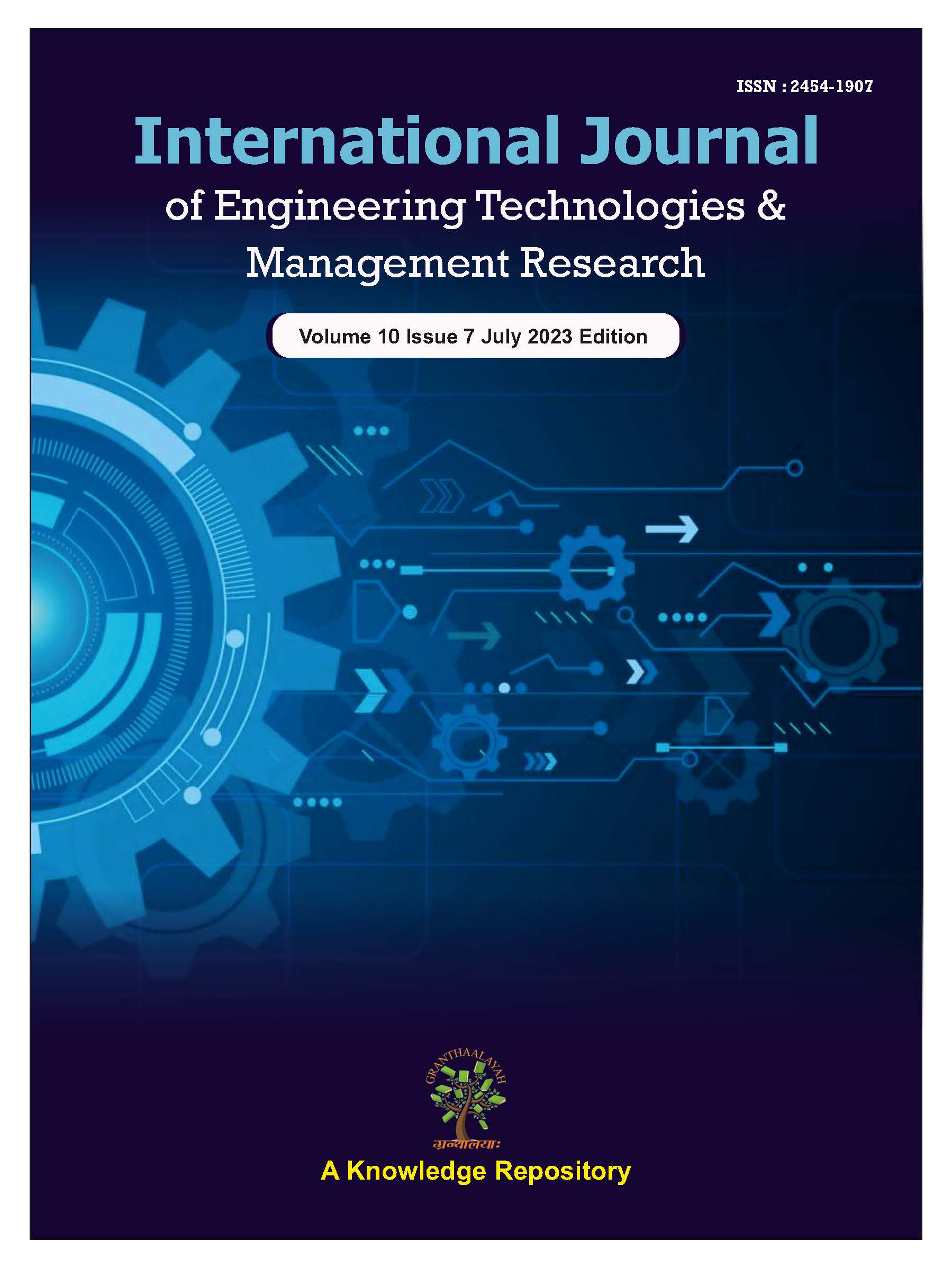INTELLIGENT PET CARE MANAGEMENT SYSTEM WITH LSTM-BASED PERSONALIZED RECOMMENDATIONS
DOI:
https://doi.org/10.29121/ijetmr.v10.i7.2023.1601Keywords:
Intelligent., Pet, System, Care, LstmAbstract
The Pet Care Management System is a comprehensive platform designed to streamline the process of pet care for owners, enabling them to efficiently manage their pets' dietary, health, and training needs. The system provides a single interface for pet owners to select appropriate pet food, schedule veterinary appointments, track vaccinations, and even access training resources. Built with ReactJS, ViteJS, Node.js, and MongoDB, the platform ensures an intuitive and responsive user experience while leveraging modern technologies for real-time data handling and seamless operations.
Incorporating Long Short-Term Memory (LSTM) models, the system optimizes personalized recommendations for pet care based on historical data, user preferences, and pet-specific needs. LSTM is used to predict the most suitable pet food and healthcare options by learning from previous user interactions and patterns, ensuring that each recommendation becomes more accurate and contextually relevant over time. The system’s backend is powered by Node.js, with MongoDB storing vital user and pet data, while JSON Web Token (JWT) provides secure authentication for users. This intelligent system not only reduces the time and effort required by pet owners but also contributes to smarter pet management, enhancing overall pet well-being
Downloads
References
Aggarwal, C. C., & Zhai, C. (2012). Mining Text Data. Springer. https://doi.org/10.1007/978-1-4614-3223-4
Al-Azani, S., & El-Alfy, E.-S. M. (2019). A Framework for Email Spam Filtering using Word2vec and Deep Learning. Journal of Information Security and Applications.
Almeida, T. A., Hidalgo, J. M. G., & Yamakami, A. (2011). Contribution to the Study of SMS Spam Filtering: New Collection and Results. ACM SAC. https://doi.org/10.1145/2034691.2034742
Androutsopoulos, I., et al. (2000). An Evaluation of Naive Bayesian Anti-Spam Filtering. Proceedings of the Workshop on Machine Learning in the New Information Age.
Blanzieri, E., & Bryl, A. (2008). A Survey of Learning-Based Techniques of Email Spam Filtering. Artificial Intelligence Review. https://doi.org/10.1007/s10462-009-9109-6
Carreras, X., & Márquez, L. (2001). Boosting Trees for Anti-Spam Email Filtering. Proceedings of RANLP.
Chen, T., & Guestrin, C. (2016). XGBoost: A Scalable Tree Boosting System. KDD. https://doi.org/10.1145/2939672.2939785
Chen, X., et al. (2006). Kalman Filter for Speech Enhancement. IEEE Transactions on Audio, Speech, and Language Processing.
Cormack, G. V. (2008). Email Spam Filtering: A Systematic Review. Foundations and Trends in Information Retrieval. https://doi.org/10.1561/9781601981479
Drucker, H., Wu, D., & Vapnik, V. (1999). Support Vector Machines for Spam Categorization. IEEE Transactions on Neural Networks. https://doi.org/10.1109/72.788645
Goodfellow, I., Bengio, Y., & Courville, A. (2016). Deep Learning. MIT Press.
Goodman, J., Heckerman, D., & Rounthwaite, R. (2005). Stopping Spam. Scientific American. https://doi.org/10.1038/scientificamerican0405-42
Hochreiter, S., & Schmidhuber, J. (1997). Long Short-Term Memory. Neural Computation. https://doi.org/10.1162/neco.1997.9.8.1735
Joachims, T. (1998). Text Categorization with Support Vector Machines: Learning with Many Relevant Features. ECML. https://doi.org/10.1007/BFb0026683
Johnson, R., & Zhang, T. (2015). Effective Use of Word Order for Text Categorization with Convolutional Neural Networks. NAACL-HLT. https://doi.org/10.3115/v1/N15-1011
Kalman, R. E. (1960). A New Approach to Linear Filtering and Prediction Problems. Journal of Basic Engineering. https://doi.org/10.1115/1.3662552
Kim, Y. (2014). Convolutional Neural Networks for Sentence Classification. EMNLP. https://doi.org/10.3115/v1/D14-1181
Kotsiantis, S. B. (2007). Supervised Machine Learning: A Review of Classification Techniques. Informatica.
Liu, P., Qiu, X., & Huang, X. (2016). Recurrent Neural Network for Text Classification with Multi-Task Learning. IJCAI.
Liu, P., Qiu, X., & Huang, X. (2016). Recurrent Neural Network for Text Classification with Multi-Task Learning. Ijcai.
Mikolov, T., Chen, K., Corrado, G., & Dean, J. (2013). Efficient Estimation of Word Representations in Vector Space. Arxiv Preprint.
Qi, P., et al. (2020). A Multimodal Approach for Spam Detection in Short Texts. EMNLP.
Radicati Group. (2021). Email Statistics Report, 2021-2025.
Ramos, J. (2003). Using TF-IDF to Determine Word Relevance in Document Queries. Proceedings of the First Instructional Conference on Machine Learning.
Sahami, M., Dumais, S., Heckerman, D., & Horvitz, E. (1998). A Bayesian Approach to Filtering Junk E-Mail. AAAI Workshop.
Salton, G., & McGill, M. (1983). Introduction to Modern Information Retrieval. McGraw-Hill.
Sebastiani, F. (2002). Machine Learning in Automated Text Categorization. ACM Computing Surveys. https://doi.org/10.1145/505282.505283
SpamAssassin, Apache Software Foundation. (n.d.). SpamAssassin.
U.S. Congress. (2003). CAN-SPAM Act of 2003.
Vapnik, V. (1995). The Nature of Statistical Learning Theory. Springer. https://doi.org/10.1007/978-1-4757-2440-0
Vaswani, A., et al. (2017). Attention is All you Need. NeurIPS.
Waseem, Z., & Hovy, D. (2016). Hateful Symbols or Hateful People? Predictive Features for Hate Speech Detection on Twitter. NAACL. https://doi.org/10.18653/v1/N16-2013
Wei, J., & Zou, K. (2019). EDA: Easy Data Augmentation Techniques for Boosting Performance on Text Classification Tasks. EMNLP. https://doi.org/10.18653/v1/D19-1670
Welch, G., & Bishop, G. (1995). An Introduction to the Kalman Filter. University of North Carolina at Chapel Hill.
Zhang, L., Zhu, J., & Yao, T. (2004). An Evaluation of Statistical Spam Filtering Techniques. ACM Transactions on Asian Language Information Processing. https://doi.org/10.1145/1039621.1039625
Zhang, X., Zhao, J., & LeCun, Y. (2015). Character-Level Convolutional Networks for Text Classification. NeurIPS.
Zhou, Z.-H. (2012). Ensemble methods: Foundations and Algorithms. CRC Press. https://doi.org/10.1201/b12207
Published
How to Cite
Issue
Section
License
Copyright (c) 2023 Shyam Mahara, Sumit Pandey, Suraj Tiwari, Charu Rohilla

This work is licensed under a Creative Commons Attribution 4.0 International License.
License and Copyright Agreement
In submitting the manuscript to the journal, the authors certify that:
- They are authorized by their co-authors to enter into these arrangements.
- The work described has not been formally published before, except in the form of an abstract or as part of a published lecture, review, thesis, or overlay journal.
- That it is not under consideration for publication elsewhere.
- That its release has been approved by all the author(s) and by the responsible authorities – tacitly or explicitly – of the institutes where the work has been carried out.
- They secure the right to reproduce any material that has already been published or copyrighted elsewhere.
- They agree to the following license and copyright agreement.
Copyright
Authors who publish with International Journal of Engineering Technologies and Management Research agree to the following terms:
- Authors retain copyright and grant the journal right of first publication with the work simultaneously licensed under a Creative Commons Attribution License (CC BY-SA 4.0) that allows others to share the work with an acknowledgment of the work's authorship and initial publication in this journal.
- Authors can enter into separate, additional contractual arrangements for the non-exclusive distribution of the journal's published version of the work (e.g., post it to an institutional repository or edit it in a book), with an acknowledgment of its initial publication in this journal.
- Authors are permitted and encouraged to post their work online (e.g., in institutional repositories or on their website) before and during the submission process, as it can lead to productive exchanges, as well as earlier and greater citation of published work.
For More info, please visit CopyRight Section






















